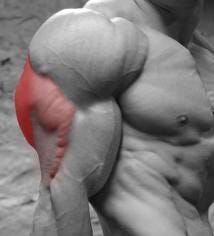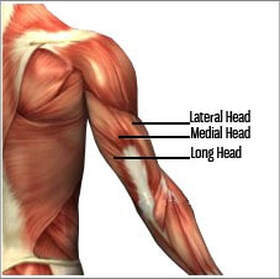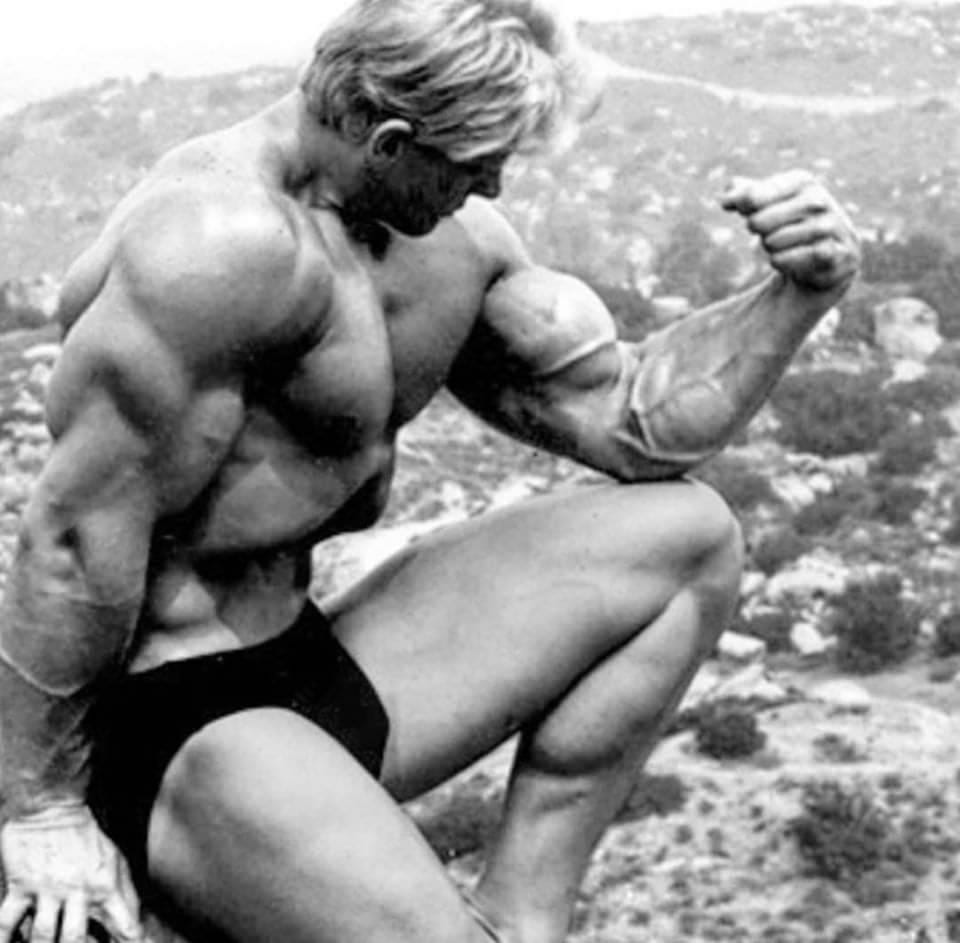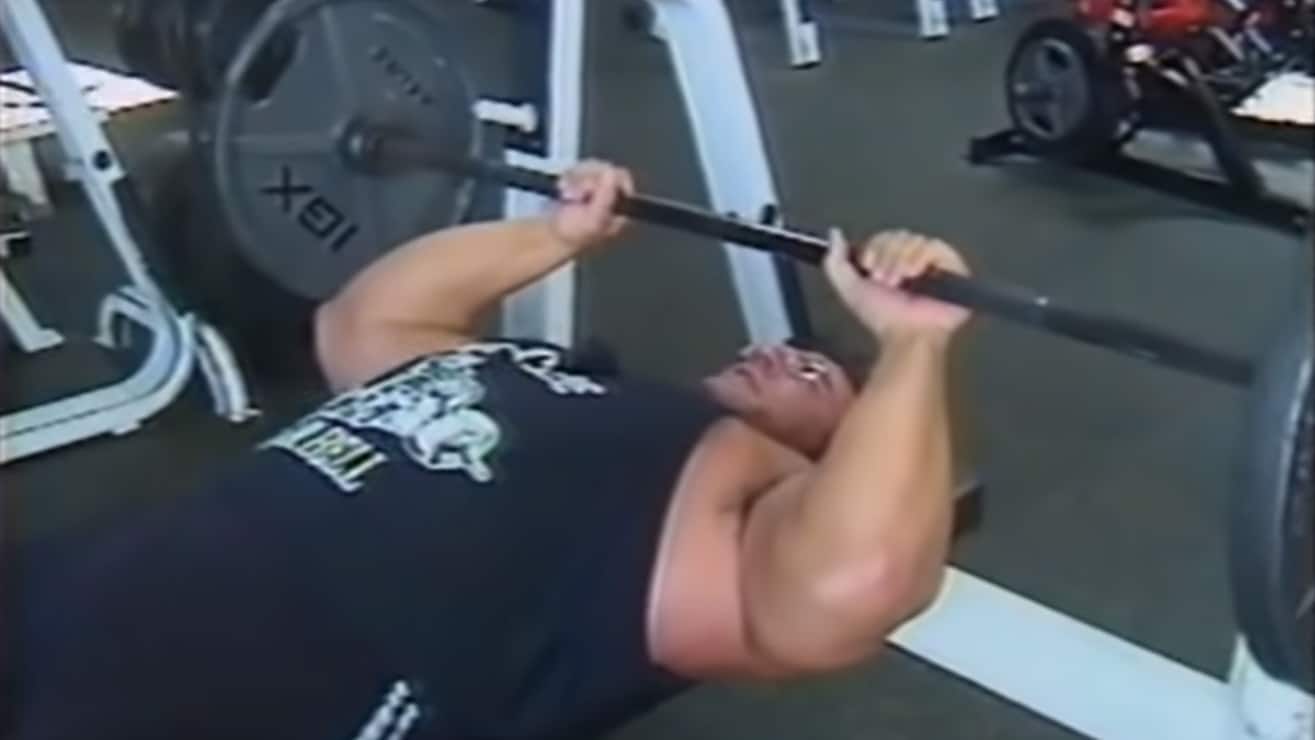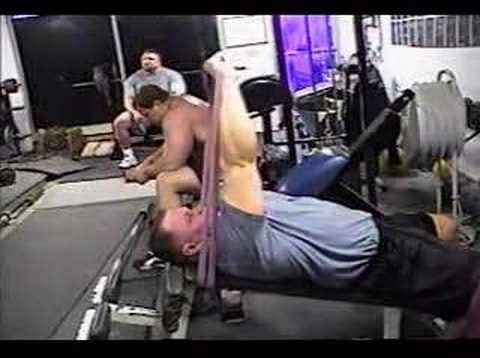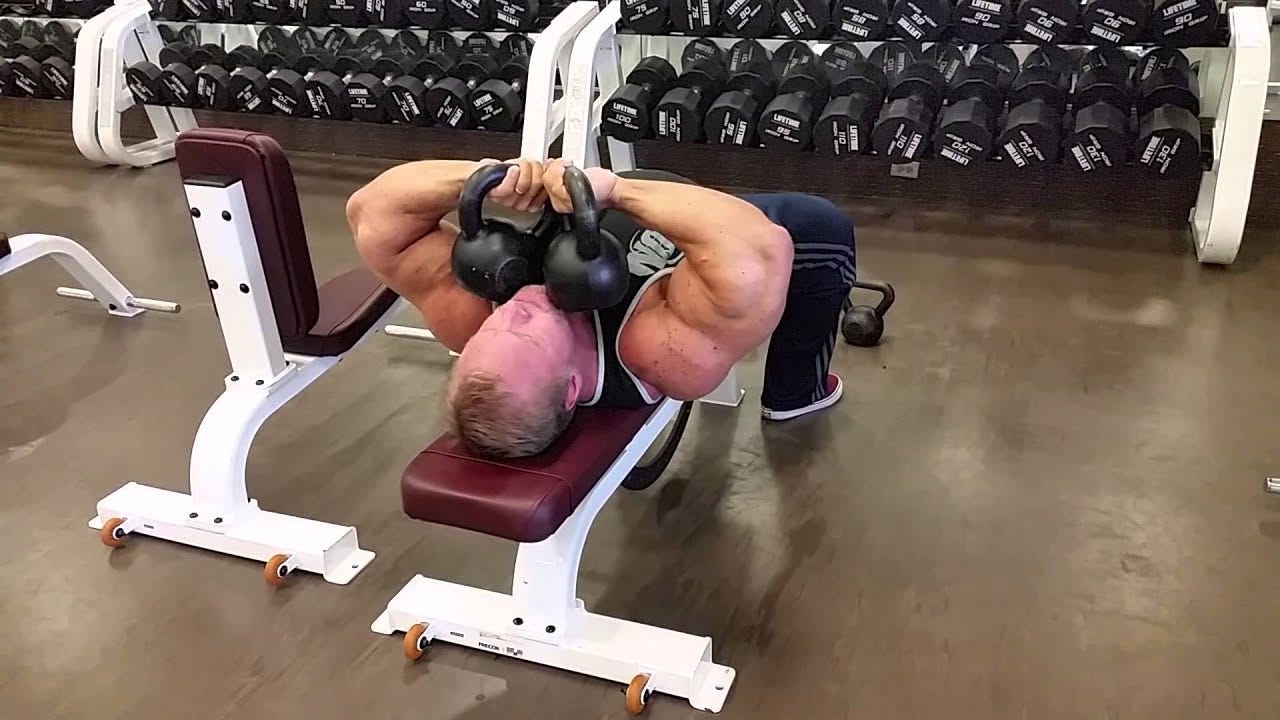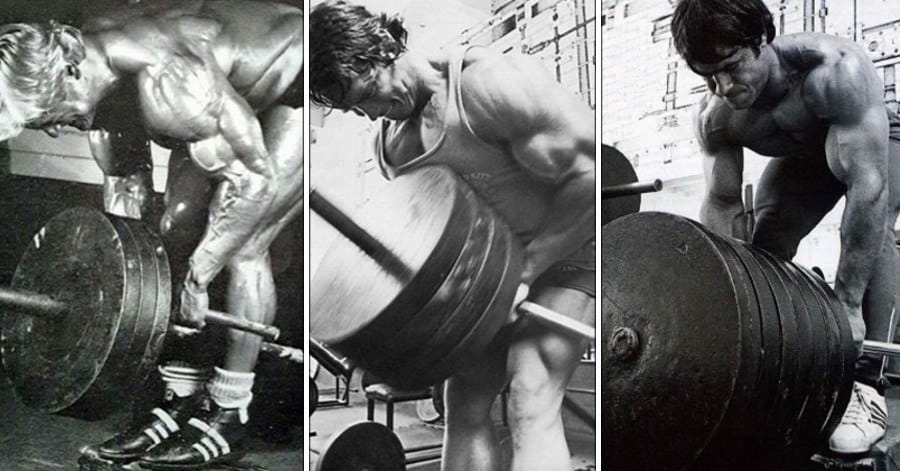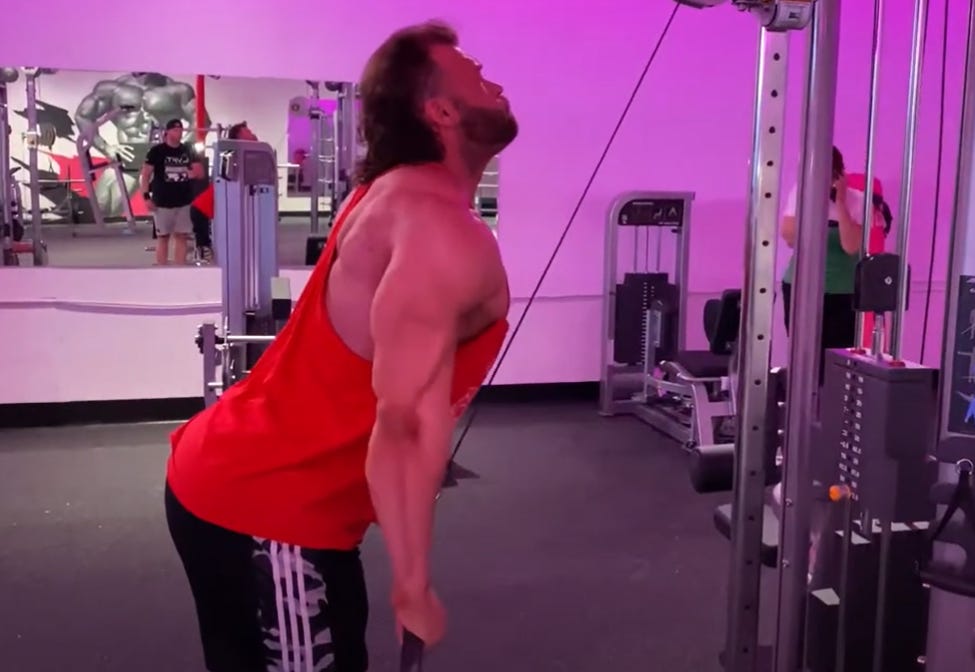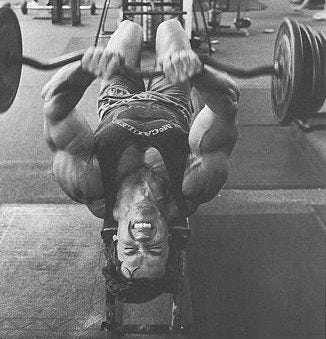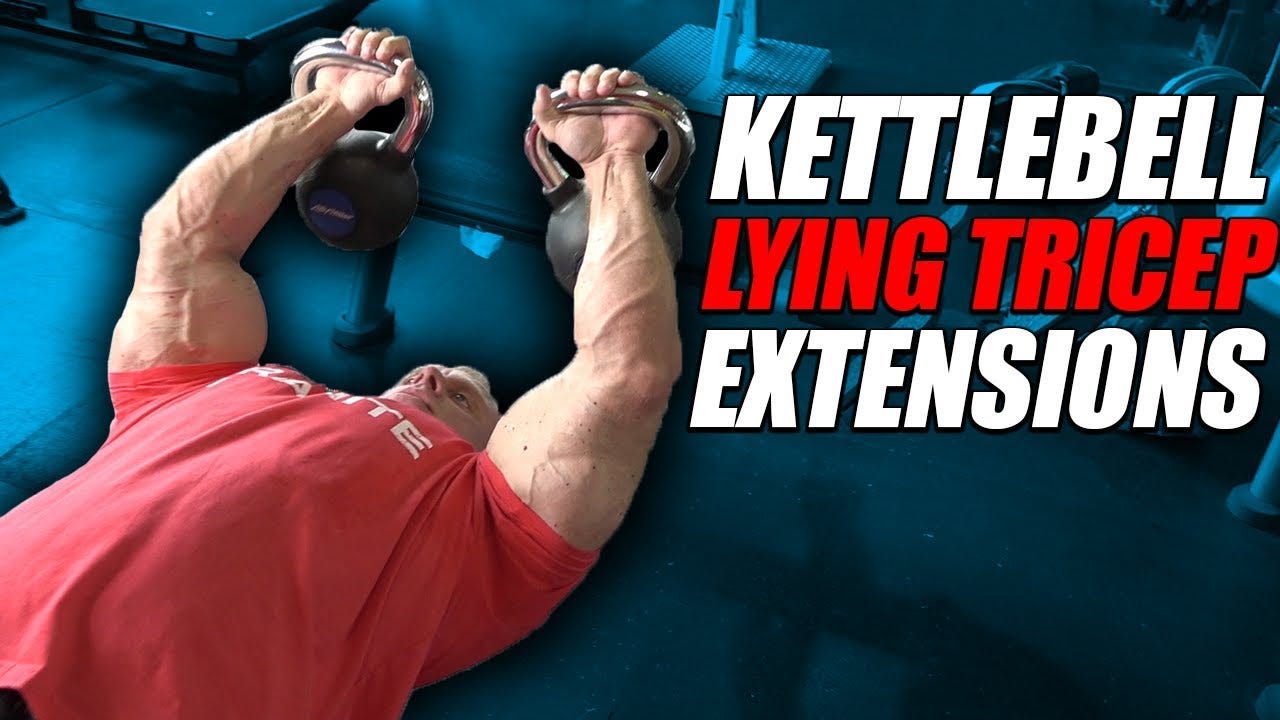The goal of this series is to relay scientific and anecdotal principles of training and biomechanics for each muscle group so that you can make the most out of your training. Keep in mind, we all have different goals so I will try to relate information in these series to performance, muscle gain, and soft tissue whenever possible. However, most of these articles will likely be speaking to the hypertrophy crowd. That being said, who would complain about looking a little more jacked?
Triceps Anatomy Basics
Let’s briefly dive into the basic anatomy of the triceps muscles. As the name suggests, the triceps have 3 heads: medial, lateral, and long. The triceps are predominantly composed of fast twitch muscle fibers which are more active in lifting heavy weights or for performing explosive movements. Sets of 8 to 12 repetitions are common in many strength training and hypertrophy programs. Although higher repetitions can also grow the triceps, they may not be as effective as heavier loads. If you’re not performing reps in the 5 to 8 rep range for the triceps, then you’re likely leaving gains on the table.
The primary function of the triceps muscles is to extend the elbow. An example of this would be a triceps extension, you’re straightening out the arm as you push the rope down. As previously mentioned, the triceps have 3 heads. All heads are active during any elbow extension although the position of the shoulder and elbow joints can highly influence which head of the triceps is used most.
For instance, the long head of the triceps is best trained with overhead movements like a cable overhead extension with the rope attachment or with a dumbbell overhead extension. The long head of the triceps is also the largest of the 3 heads. It’s typically known as the most visible of the 3 heads.
Next up, the lateral head. The primary role for the lateral head is to extend the forearm at the elbow joint. This type of extension is often accomplished in movements like the close grip bench press, JM press, Dips, and overhead press. If the goal is to hammer the lateral head of the triceps, then either the close grip bench press or the JM press should be your first choice. Again, since the triceps are predominantly composed of fast twitch fibers, I recommend going heavy (5 to 8 reps) for these movements and sticking them toward the beginning of the training session. Make sure for the close grip bench to aggressively tuck the elbows against the body as the bar descends downward toward the sternum. This will maximize triceps recruitment over using the chest or shoulders.
Last but not least we have the medial head of the triceps which is typically most active when the shoulder is flexed at or past 90 degrees. The fiber composition of the medial head of the triceps differs from the lateral and long head of the triceps. It is predominantly composed of mostly slow twitch fibers. This is why it’s important to incorporate all rep ranges into your training plan instead of sticking to a narrow set of rep ranges. Movements with the hands partially or fully supinated (palm up position) will more actively engage the medial head. Movements for the medial head include Tate presses and reverse grip pushdowns.
Keep in mind, all heads of the triceps are active during any elbow extension. Your movement selection and position can influence which head is primarily targeted. I recommend using different angles and attachments to not only target the heads of the triceps differently, but also to avoid injury through pattern overload and to work a wider array of muscle fibers. Targeting more muscle fibers will help to increase overall triceps mass in the long term and improve strength by recruiting more fibers. Changing angles and movements every few weeks is also important to avoid pattern overload. Repetitively performing any movement too intensely for a long duration will wear and tear the joints, ligaments, and tendons associated with the movement and could lead to eventual pain or injury. Effective programming is an obvious performance enhancer, but it can also help prevent aches, pains, or injuries well before they occur.
Programming For Triceps
At the beginning of the article several triceps movements were mentioned. They were then categorized into which head of the triceps they target most effectively. Exercises can also be subdivided into compound or isolation movements. Compound movements involve multiple joints and muscle groups while isolation movements will only emphasize a single joint or muscle. I recommend programming both compound and isolation movements into your routine for any muscle group but even for smaller muscles like the triceps.
Compound Movements for the Triceps
Bench Press with Dumbbells or Barbells
Overhead Press with Dumbbells or Barbells
Close Grip Flat or Incline Bench Press
Close Grip Floor Press
Close Grip Board Press
Bodyweight, Weighted, Assisted, or Bench Dips
Close Grip Pushups with Bodyweight or Weighted
Isolation Movements for the Triceps
EZ Bar Skull Crusher to the Nose, Forehead, or Behind the Head
Rope or Bar Triceps Extension
Dumbbell, Rope, Bar, or Kettlebell Extensions
Overhead Extensions from a Low or High Pulley
JM Press
Intermediate and advanced trainees can rotate exercise every 2 to 4 weeks while novice trainers can rotate exercises every 3 to 8 weeks and still avoid plateaus or injury. I recommend choosing compound movements that are most relative for your goals. For instance, if the goal is to build triceps strength for a bigger bench press than a close grip bench would likely be a better choice than a bench dip. The close grip bench press is almost the same movement pattern as a competition bench press just with a narrower grip while the bench dip has entirely different mechanics. Strength will transfer better when movements are more mechanically similar to one another. On the other hand, if the goal is to get bigger triceps, then selecting a movement with a larger range of motion that maximizes the kind muscle connection and allows you to feel your triceps best will be the best selection.
‘There’s no sense being strong in the wrong exercises’ - Louie Simmons
Strength is still important even when hypertrophy is the primary goal. Increasing a 1RM close grip bench from 150 lbs to 200 lbs will allow for greater triceps volume and drive further gains in muscle mass over time. For example, with a max of 150 lbs a trainee is likely doing somewhere around 70% for sets of 10 repetitions.
150 lbs x 0.7 = 105 lbs
3 sets of 10 repetitions at 105 lbs = 3150 lbs of total volume
200 lbs x 0.7 = 140 lbs
3 sets of 10 repetitions at 140 lbs = 4200 lbs of total volume
Strength is partially related to improvements in nervous system efficiency as well. This means that as you get stronger you’re able to recruit more motor units and innervate more muscle fibers. Over time strength improvements work as a feedforward mechanism to increase muscle mass. Working more fibers should compound and result in greater gains in hypertrophy.
Everybody wanna be a bodybuilder, but nobody wanna lift no heavy ass weight. -Ronnie Coleman
Another important component of programming is ordering exercises in the proper sequence within a training session. Keep the heavier work with low reps at the beginning of your session and light sets with higher reps at the end. Heavy barbell floor presses are more taxing on the muscles and nervous system than something like a high rep triceps extension. Compound movements also have more moving parts since they’re multi-jointed. There is considerably more skill required to perform a heavy floor press than a dumbbell extension. We want to add the compound movements to the beginning of the session since skill tends to deteriorate with increased fatigue. Keeping compound movements first and supplementing them with isolation movements at the end of the session will help to reduce injury risk and maximize training outcomes.
A triceps emphasized pressing session can look something like the example below:
A1. Close Grip Barbell Bench 4 x 6-8, Rest 2-3 minutes between sets
B1. Dips 3 x as many reps as possible, Rest 1-2 minutes between sets
C1. Overhead Triceps Extensions 4 x 8-12, Rest 1 minute between sets
D1. Reverse Grip Pushdowns 3 x 15-20, Rest 1 minute between sets
In the example above we start with a heavy triceps movement that primarily targets type two fibers. Then move to a dip which will equally target the long and lateral head. Use assistance for the dips if you can’t perform at least 8 reps per set. The entire session should go from lower reps to higher reps as it progresses. Lastly, we finish with two isolation movements. The overhead extensions will target the pesky long head of the triceps with moderately heavy repetitions followed by reverse grip pushdowns for higher reps to target slow twitch fibers in the medial head of the triceps.
Over the course of several training cycles, you can fine tune the volume and exercise selection for your programs to choose only the most effective exercises for your goals. Realize that it takes time to determine which exercises will provide the biggest return for you. It’s a process of elimination that takes months or years so be patient and make sure to rotate exercises every few weeks.
Avoiding Pain and Injury
Volume, technique, and recovery will all impact injury risk. It’s common for powerlifters to experience elbow pain from high frequency and intensity bench pressing. The pain is often a result of not complimenting training with enough elbow flexion movements. A powerlifter usually knows the importance of hammering the triceps during training but will neglect curls or pulling movements with more elbow flexion like a supinated pulldown. This in turn will lead to an imbalance in the elbow joint.
The solution would be to complement any triceps work with supinated pulling exercises or isolated elbow flexion like bicep curls. In an ideal world, elbow extension movements would have a perfect balance, but that may not be realistic. If you perform 20 sets of elbow extension movements (pressing) you don’t necessarily need 20 sets of elbow flexion (pulling) movements. A 1:1 ratio isn’t necessary and there isn’t a perfect ratio but keep it reasonable. If you’re pressing twice as much as you’re pulling, it’s probably time to audit your training program and add some pulling in if you’re feeling elbow pain.
High repetition elbow flexion and extension movements like banded bicep curls and triceps extensions respectively can also mitigate joint, tendon, and ligament pain by improving the integrity of the connective tissues and help them adapt to greater volumes of training. From experience, I would stick to 1 set of 100 band curls and triceps extensions per week or 2 sets of 50. The repetitions should be high to drive high volumes of blood through the muscle and to exhaust the muscles so tendons and ligaments can begin to pick up some of the slack. These movements with the band should be quick and rhythmic but still focus on getting a contraction each rep.
Proper Form
John Meadows has some of the best content on the web for bodybuilding and his triceps training videos are no exception. I highly recommend John’s advice when it comes to positioning for triceps isolation exercises like pushdowns. You want the head and sternum up with an extended spine and a slight lean toward the weight stack. You can immediately feel greater triceps recruitment once you have this position locked in. Seth Shaw (pictured below) also uses similar position.
Make sure to push down smoothly without jerking the weight down and to spread the hands at the bottom of the movement. Even if you are using a bar attachment that’s stiff in place of a rope, you can still spread the hands a bit to get that extra extension at the bottom of the movement. I like to pause the movement there enough to come to a full stop a really feel a good contraction before slowly releasing the weight back to the top position.
Movement Selection & Triceps Skull Crushers
Skull crushers are another common triceps agitator. Old school bodybuilding magazines and the biggest guy at your local gym probably all do them. Usually only because they’ve seen other people in their gym or in the media do them. I’m personally not a big fan of the skull crusher. The range of motion isn’t great if it’s actually going to the skull, most people perform it incorrectly by flaring the elbows out too much, and it’s typically felt more in the joint or tendon than the muscle belly of the triceps. Instead, I prefer other exercises with dumbbells and kettlebells.
My favorite skull crusher alternative is the kettlebell skull crusher. The kettlebell skull crusher is performed similarly to a traditional skull crusher except the barbell is replaced by a kettlebell in each hand. The range of motion for this movement is greater since the kettlebells can travel past the face instead of stopping right at the bridge of the nose. The range of motion is at least double of what it would be with the bar. This provides a greater stretch at the bottom of the movement and allows more triceps fibers to be recruited throughout a set. It also provides a more natural wrist motion since the hands are able to rotate internally on the eccentric. This movement feels great on the triceps, and I’ll typically feel a huge burn about 8 reps into the set due to the large range of motion, a pause in the stretched position, and a maximal contraction at the top of each movement.
Here is a list of effective skull crusher alternatives to hammer the triceps with zero elbow pain:
Dumbbell Skull Crushers
Dumbbell Rollbacks
Kettlebell Extensions
JM Press
Takeaways
To sum it all up, you can change attachments, grips, angles of movements, or rep ranges to target different heads of the triceps. Avoid using the same rep scheme or same types of triceps exercises in training. Mix up how you perform triceps movements to work all three heads of the triceps or to bias an underdeveloped head of the triceps. Use a wide variety of reps to target both fast and slow twitch fibers.
Medial: Primarily slow twitch fibers, trained with supinated grip
Lateral: Primarily fast twitch fibers, trained with elbow extension at the forearm
Long: Primarily fast twitch fibers, trained with shoulder at 0 degrees (overhead movements)
Most importantly, train hard and close to failure with isolation movements but don’t be afraid to load up on the heavy dips, close grip presses, or JM presses to maximize your triceps development.
Drop any questions or fears below.




